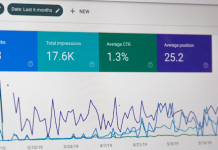In this article, chief engineer Major Mixing – mixing and mastering studio will talk about how to set up a studio at home, and is it even possible to do it with a Home Recording Studio?
Audio production and recording is quite an exciting process. In order to create your own studio, you need to accurately understand your goals, approach the choice consciously and adhere to some tips that will help you organize a Home Recording Studio with moderate costs at the initial stage.
- Choose the largest room in your apartment- a Home Recording Studio
Thanks to the constant progress in digital technology, every aspiring musician can set up a studio at home, but the main criterion will be the space where future songs will be recorded. Of great importance are the preparation of the room and the subsequent choice of a place for your desktop. The smaller the room, the worse. It’s not so much the comfort itself, but the scattering of sound waves. The larger the assumed space, the more the sound will overcome the distance and, accordingly, it will be better to fade, there will be an echo, but it will not be multiple reflections.
2. Make an acoustic design
After choosing your future studio, you will need to build an acoustic box. There are several options for proper and high-quality acoustic design.
The first, the most banal and budget, is to cover all the walls with thick fleece curtains or wool blankets. After buying them, the artist will need to hang the cornice by attaching this design to it. For a novice artist who does not have a large amount of money, this option will be the most optimal. However, this method will not always be effective, due to the fact that it does not greatly extinguish strong frequencies.
The second option is to create acoustic traps made of mineral wool or glass wool. Mineral wool is sold in slabs and should be sufficiently dense, which insulates well and absorbs sound. One such plate is taken, a wooden frame is made around it, which is subsequently wrapped with a cloth, and at the final stage a small box is obtained that absorbs both the bottom and the top. The more such traps there are in the studio, the better the result of each track will be.
The third option is acoustic foam rubber. If the budget allows you to purchase a stop on this, rather expensive option, the artist sets it, scoring all the empty seats in his future studio, which will be more comfortable and for sound, and the recording will be better.
3. Buying a good and comfortable table
There should be a table in the studio. It does not have to be huge in size, which will occupy most of your space, on the contrary, it should be small in size, due to the reflection surface. In principle, it is enough to place only two screens on it, a midi keyboard and a keyboard from a computer, studio monitors that should be located on heavy racks (the heavier they are, the better). They should show you all the irregularities of your material, so that in the process of work you can immediately refine them. It is not necessary to put the speakers on the table, due to the fact that when working, the table will buzz, creating the “illusion” of good work and sound, but this will be a mistake.
4. Comfortable things
To give comfort and coziness to their future studio, many resort to buying things that help artists relax. Carpets belong to one of these and many will ask: why, in fact, a carpet in the studio? It is already becoming a tradition for artists to record tracks or albums standing on the carpet. There are no hidden meanings here, it’s just convenient and the artist begins to feel some comfort.
After that, there is a selection and purchase of the necessary equipment. Everything will depend on the tasks that the artist has. First of all, you should choose a microphone and a microphone stand. It is he who gives the artist about 80 percent or more of quality. As for the laptop, in principle, you can work with the old one, it will not affect the quality of the track in any way, unlike the microphone, which, if it does not meet certain requirements, will simply ruin all your work. Do not skimp on this purchase, the more expensive the microphone will cost, the better the quality will be, only then a laptop, screen, keyboards and monitors are purchased.Regarding monitors, it is important to remember that it is not the specific brand of the purchased devices that is much more important, but their sound and proper work with them If the future studio is small, you do not need to spend money on huge monitors. Studio monitors for a novice artist more than 8 inches does not make sense to buy at all.To work at your own studio, you will also need to purchase digital-analog audio software (i.e. DAW). It is the main software that needs to be used to create music. They allow you to combine audio, as well as listen as hosting for plugins.
In general terms, this is all the most important thing that you will need for a home studio. Creating a studio can be long and time-consuming, but the reward for this will be a whole studio that will always be at your disposal, where the artist will give full rein to his fantasies, without disturbing anyone.








